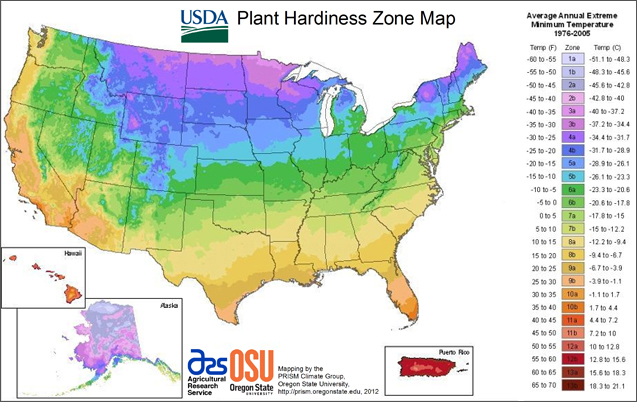Vegetable Planting Calendar By Season According To Your Gardening Zone

Many gardeners are unsure of what to grow and – more importantly – when to grow it. While the spring is when garden centers are full of seeds and seedlings fresh from the greenhouse, it’s not the only season of the year for planting.
Although not every zone allows year-round gardening, most allow at least three seasons’ worth and some allow part of a fourth. To take advantage of this, you’ll need to spread out your planting of some crops (planting new seeds every couple of weeks), while other crops you will plant once in the spring and then replant again in mid-season.
Let’s take a look at each season and what you can plant. Be aware that the dates below are for planting in Zone 6 in the Midwestern U.S., so you’ll need to adjust for your own gardening zone.
You can find your gardening zone by ZIP code at the National Gardening Association web site.
Spring vegetables – March, April and May
This time of year the weather is warming and things are beginning to look like spring. Many cold-tolerant vegetables can be planted in March, including cabbage, broccoli, endive, cauliflower, head lettuce, potatoes, radishes, onions, peas, spinach, turnips and beets.
In April, more can be planted like collard, chard, carrots, leaf lettuce, salsify, and onion sets. Some of the things planted in mid-March may also be ready for harvest, such as lettuces and radishes, which are fast-growing.
In May, things really heat up and spring is definitely on. This month, most traditional gardening begins and things like snap and lima beans, cucumbers, eggplants, melons, peppers, okra, pumpkins, sweet potatoes, sweet corn, summer and winter squash, and tomatoes are ready to go in. Some of the things planted in March and April will now be ready for harvest, such as leaf lettuce, collard, lettuce heads, green onions, peas, and spinach.
Summer vegetables – June, July and August
With summer comes the mid-season gardener’s nightmare: bugs and pests. Still, planting and harvesting continues. In June, harvest is the name of the game with early crops like snap beans, cabbage, collards, chard, carrots, broccoli, endives, cauliflower, lettuce (head/leaf, depending on how you staggered them), green onions, peas, late spinach, turnips, and beets all being ready. If you have the space, keep sowing more cucumbers, snap beans and sweet corn to lengthen your harvest.
In July, the harvest continues, but more planting for fall crops is in order. Cabbages, carrots, turnips, cauliflower and broccoli are all finishing up production. Potatoes, snap beans, cucumbers, and summer squash are in full swing. Melons, peppers, sweet corn and tomatoes start to come in. Replant cabbage, carrots, broccoli and cauliflower for fall harvest.
For August, you’re mostly harvesting with just a few things being planted. Beans and cucumbers usually appear in abundance this month. Eggplants may start to come in and watermelons are likely ripening now as well. Peppers, okra, onions, sweet corn, summer squash, and tomatoes are also overwhelming your bushel baskets this month. You can replant radishes, lettuce, kale, spinach, turnips and beets.
Fall vegetables – September and October
As the leaves begin to turn and the weather gets less predictable, fall is in. The traditional harvest time, everything that didn’t finish in August will be finishing in September and October. You’ll be continuing to harvest lima beans, cucumbers, eggplant, peppers, sweet corn, squash and tomatoes. Winter squash and pumpkins will come in as well. If you planted a second round of crops for fall harvest, you’ll also be enjoying cabbages, carrots, beets, broccoli, cauliflower, lettuce, radishes, spinach and turnips.
A few winter veggies can be planted this month, depending on your local climate. Leaf lettuce, spinach, and turnips can be tried.
Winter vegetables – November
Anything that didn’t finish in October will finish now. A few of the early varieties planted in October may be ready at the end of the November or beginning of December, especially if the frost is late coming. Baby spinach is a favorite this time of year and many potatoes and beets that were left in the ground can now be dug up.
Source: www.gardeningchannel.com


